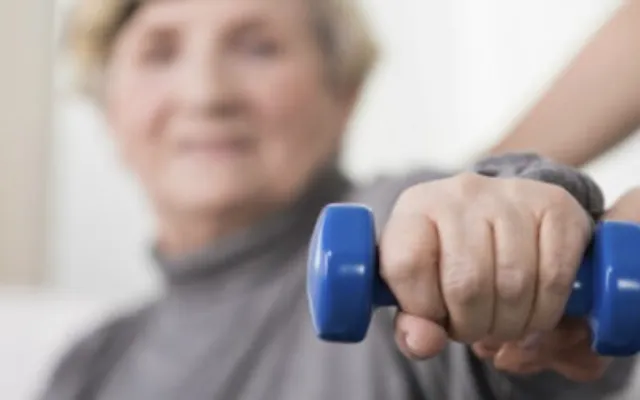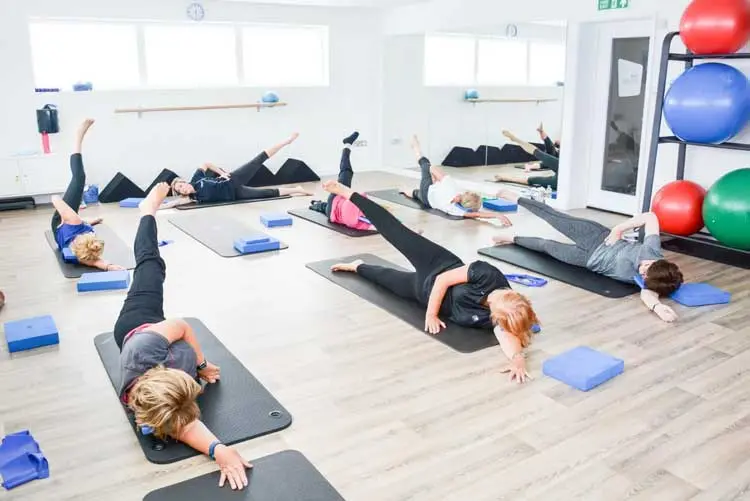Arthritis means joint inflammation – arthro = joint and itis = inflammation. It’s an umbrella term used to cover many different types of joint inflammation.

Many people know they have arthritis or have heard of arthritis, but sometimes aren’t sure which one they have or what the different types are.
This blog will cover the 4 most common types of arthritis and give you more information on what it is, which joints are affected and how it can be treated.
Physiotherapy has a crucial role in helping all types of arthritis by helping to maximise muscle strength, joint mobility and flexibility and supporting functional independence, so helping you to keep doing the things you enjoy.
Osteoarthritis
This is the most common type of arthritis and tends to develop gradually over time.
What Happens?
The cartilage at the joint becomes worn and rough, sometimes wearing out completely. This leads to osteophytes, or small bony growths, forming at the edges of the joint to try and replace the cartilage. The joint space becomes narrowed and tissues surrounding the joint can thicken. Often, there is inflammation making the joint stiff and painful to move.
Which Joints?
Osteoarthritis is most common in the hands, knees, hips, feet and spine.
How Is It Treated?
Medication: Analgesics for pain relief, non-steroidal anti-inflammatories for reducing inflammation and pain & steroids to reduce severe inflammation.
Surgery: Arthroscopy – to clean out the joint and remove any irritants & in more severe cases, joint replacements – most common in hips and knees.
What Can You Do To Help?
- Keep mobile
- Strengthen muscles to help support joints
- Learn to pace activities
Rheumatoid Arthritis
This is an inflammatory disease, affecting joints and tendons. It tends to present with episodes of ‘flare ups’.
What Happens?
Inflammation usually helps to heal the body, but with Rheumatoid Arthritis, prolonged inflammation causes damage. The immune system starts to attack joints, causing the prolonged inflammation. The joint capsule also becomes inflamed, leading to pain, stiffness and swelling.
Which Joints?
Rheumatoid arthritis is most common in the neck, hands and feet.
How Is It Treated?
Medication: Non-steroidal anti-inflammatories and disease modifying anti-rheumatic drugs to reduce inflammation and slow the damage being caused. Steroids may be used in severe cases of inflammation.
Surgery: Joint replacement surgery if joint function is lost or at risk.
What Can You Do To Help?
- Learn to pace yourself and accept help on difficult tasks
- Speak to an Occupational Therapist and Physiotherapist for help with activities of daily living.
Ankylosing Spondylitis
This is another form of inflammatory arthritis that affects the spine. Ankylosing means stiffening and spondylitis means inflammation of the spine.
What Happens?
The joints in the lower part of the spine become painful and inflamed, where the sacrum joins the pelvis. This inflammation then starts to travel up the spine, affecting vertebra at higher levels. The inflammation causes scar tissue to form in the joint spaces between the vertebra, reducing movement. Over time, the scar tissue may become calcified – turning into a bony-like tissue, which fuses the joints together and limits the available movement in the spine.
Which Joints?
Ankylosing Spondylitis mainly affects the spine, but can also affect the hips and shoulders.
How Is It Treated?
Medication: Non-steroidal anti-inflammatories and disease modifying anti-rheumatic drugs to reduce inflammation and slow the damage being caused. Steroids may be used in severe cases of inflammation.
What Can You Do To Help?
- Keep active
- Give up smoking – AS can lead to restrictions in rib movements and smoking will reduce lung function further
Gout
This type of arthritis responds well to treatment and further joint damage can be avoided with effective treatment.
What Happens?
Gout is caused by high levels of uric acid crystals building up in the joints. This happens when levels of uric acid are too high in the body – either because more is produced or not being effectively removed as a waste substance. Once the uric acid forms crystals around the joints, there may move into the joint space – this is when the pain, swelling and inflammation starts. It tends to last a few days and then settle, letting the joint return to normal.
Which Joints?
Most commonly affects the big toe joint, but can also affect the ankles, knees, hands, wrists and elbows.
How Is It Treated?
Severe acute attacks will be treated with non-steroidal anti-inflammatory drugs. For people affected regularly, preventative medication like allopurinol or febuxostat may be given to stop uric acid build up in the body.
What Can You Do To Help?
Drink plenty of water Avoid alcohol and red meat – these can increase uric acid levels



